Jesus Sends me a Buddhist! Chapter 4, Part 1
The Ancient Blueprint Comes Alive – Dr. Ariyaratne and Sarvodaya
Welcome to the Birthing the Symbiotic Age Book!
NEW here? — please visit the TABLE OF CONTENTS FIRST and catch up!
You are in Chapter 4, Part 1, The Ancient Blueprint Comes Alive - Dr. Ari and Sarvodaya
Chapter 4 posts: Jesus Sends Me a Buddhist
Embodying Virtues – the Interface Between Heaven and Earth and Launching the First Symbiotic Network
Are you trying to figure out where this is All Going? Read an overview of the Symbiotic Culture Strategy, which embodies the Transcendent through the nodes of intersection within local, grassroots-empowered community networks.
Voice-overs are now at the top of my posts for anyone who doesn’t have the time to sit and read! Also, find this chapter post and all previous posts as podcast episodes on
Spotify and Apple!
Previously, at the end of Chapter 3, Part 3:
Now, in my early thirties, I had a sense that I had completed my initial “schooling,” and I was ready to take my vocation, my calling, out into the world — to discover the power of local symbiotic community networks in making fundamental change on the ground in real-world communities.
My thought was, how could I possibly “operationalize” the global vision I saw on that dark mountain road?
Another powerful figure, Dr. A.T. Ariyaratne, founder of the Sarvodaya Shramadana Movement from Sri Lanka, who would also change my life forever, held the key!
Chapter 4: Jesus Sends Me a Buddhist! Part 1
The Ancient Blueprint Comes Alive – Dr. Ariyaratne and Sarvodaya
Introduction
My encounter with Jesus gave me a broad, planetary vision of a connected, unified web of humanity and all life — that was now as real to me as anything I had ever experienced. And … I was like, “Thank you, Jesus! Now what? How do I make that vision real?”
There was no public Internet or social media in the late 1980s and early ‘90s, and I hadn’t the slightest clue how to manifest this powerful vision.
However, I knew that my “calling” was to be in service, to bring people together in communities, connecting across silos around a common purpose and mutual benefit. Basically, to gather the Cosmos in Love!
So, I decided to start where I was.
And where I was was a primarily Hispanic neighborhood called Sherman Heights, on the outskirts of downtown San Diego. In the late 1800s, this area was a wealthy part of town with stylish Victorian mansions. One hundred years later, however, it had deteriorated into a high-poverty area where the sound of gunshots could be heard daily, and prostitutes and drug dealers conducted their business on the streets.
I had just started working on a book project on functional literacy for McGraw-Hill. I lived on a half-acre property with a big backyard next door to one of the oldest Victorian homes in San Diego. I rented a carriage house built in 1851, where the occupants of the Victorian mansion would park their horses and carriages.
The Victorian mansion next door was owned by a property management firm that was frustrated they couldn’t develop the property because it was a historic home. As an expression of their frustration, they allowed some drug dealers to move in and squat on the property, maybe hoping they would destroy the place so they could tear it down.
Being the renter next door, I was concerned about this. At one point, there was a confrontation between the drug dealers and a rival group, who pulled up in a car. I saw my neighbors going to the vehicle with a baseball bat and smashing the front windshield. Next, one of the guys in the damaged car came onto the property right next to me and confronted the next-door dealers with a knife.
As soon as I heard someone yell, “Go get your gun,” I felt a stirring in my heart to do something. Somehow, I found myself standing in between the two principal antagonists.
In that split second, a voice coming from within me said powerfully to them, “You don’t want to do this because it will change your entire life.” There I stood for ten seconds, enough time to stop the momentum of a train heading for a train wreck. That pause must have been all that was needed. Suddenly, the driver’s companion started to plead with his buddy that it wasn’t worth it. It was over, and I couldn’t believe what I had done.
I can’t say whether I was divinely inspired or ridiculously foolish, but for some reason, I felt protected. I never for a moment felt in danger. While I can’t even now fully explain my fearlessness — or foolhardiness — in stepping into that armed confrontation, I suspect it had something to do with the spiritual core I had been developing, combined with my sincere desire to be of service.
In that regard, I found myself called to an even broader mission.
Never Let a Catalyzing Crisis Go to Waste
Given all the drug dealers and users in the neighborhood, one of the huge problems was needles on the streets, on the sidewalks, and the grassy areas between the sidewalks and the freeway. I attended a community meeting and was deeply moved by concerned mothers who didn’t feel safe on the streets, worried about all the dangerous needles strewn all over where their children could encounter them.
As I learned later, when I immersed myself more deeply into symbiotic network building, sometimes a community needs a “catalyzing crisis” to bring people together around a common purpose. Well, Sherman Heights wasn’t facing a flood, a fire, or an earthquake, but those needles — symbolically and actually — provided just that catalyst.
To bring the largely Hispanic community together, we created a series of Convivencias in my large backyard. “Convivencia” comes from the Spanish verb, convivir, to live with.
It involves sharing food — of course — as well as fellowship, affection, and company. If we were going to work together to clean up the neighborhood,
we figured we’d start with a celebration.
We convened the first gathering, and more than fifty people showed up to share food and see how they could help. The people came from all classes and all walks of life. Most were Hispanic families from the neighborhood, and some were from local churches and community groups. We also had folks outside the general region who wanted to get involved and be of service.
After a series of informal discussions, the conversation shifted to the detrimental impact the drug dealers and users were having on the neighborhood, especially the children. Everyone was concerned about the hypodermic needles that were seemingly everywhere — a health hazard for the entire neighborhood.
As our good fortune would have it, the largest grassy area where thousands of needles were dumped was above a major highway, a property owned by the California Department of Transportation (Caltrans). Once I realized this, I was able to enroll several government agencies and community leaders, along with those already involved, to partner with Caltrans to do a needle cleanup.
This will sound like I’m exaggerating, but I’m not. When we finished the cleanup, we had a small hill of hypodermic needles ten feet high and ten feet wide. Even with our volunteer crew — hundreds of people — it cost Caltrans some $50,000 to cover the remediation.
This was a successful community endeavor that enhanced pride in more ways than one. First, the needles were gone, and the mothers felt safer. Second, our community—and a community center in Sherman Heights—found a common cause and a way to work together successfully.
As I later learned, part of the symbiotic network’s secret sauce focused on the common challenge (what we are for) rather than divisive issues (what we are against). I learned that groups that have been previously divided into their own silos could be brought together around the “functional context” of addressing just one common issue.
A functional context means addressing one concrete human need — because of that, political, religious, ethnic, and other divisions become less important.
This practical insight would become extremely important later in
building more complex symbiotic networks.
And while this success was gratifying, it was a one-off. There was no momentum for any other forward motion to address some of the other neighborhood challenges and weave together an enduring community. Shortly afterward, I had to move because my own property was in such bad shape.
Even though we could not build an infrastructure to keep the movement going for the long term, the momentum continued to build within me as I wondered if there was some structure, some model not just for facing a problem together but for creating a sustainable, symbiotic community.
That’s when Jesus sent me a Buddhist!
The Ancient Blueprint Comes Alive – Dr. A.T. Ariyaratne and Sarvodaya Shramadana
I have found throughout my life that when you desire to align with the Transcendent and then set a strong and firm intention, synchronicity, serendipity, and, hopefully, grace show up.
It was in 1991, after my year with Catalina and my encounter with Jesus, that I moved to Logan Heights, another low-income, multi-ethnic community, largely Hispanic and African-American, in the same general area as Sherman Heights.
At that time, I was a San Diego Community College instructor at Chicano Park Learning Lab (a community center in the heart of Logan Heights), where I taught GED completion and twenty high school subjects. I had another job working as a jail educator at Chula Vista Detention Facility.
In my spare time, I pursued my interest in all aspects of community work. I was reading an issue of Mark Satin’s New Options newsletter when I found an intriguing letter to the editor about Sarvodaya, a spiritually based, self-help, grassroots, community, and economic development movement in Sri Lanka.
Mahatma Gandhi first used the term Sarvodaya to describe his India-based spiritual, social, cultural, economic, and political philosophy: “universal uplift” and “progress for all.”
Founded by Dr. A.T. Ariyaratne (Dr. Ari), a Buddhist follower of Mahatma Gandhi, Sarvodaya Shramadana was “upgraded” to mean “the Awakening of All through the gift/sharing of energy” (labor, thought, energy, materials, etc.).
Dr. Ari began the Sarvodaya Shramanda movement in 1958 as a young science teacher. Inspired by Mahatma Gandhi’s social activism and philosophy, he wanted his upper-class students to have an experience working alongside the poorest of the poor in the many impoverished villages.
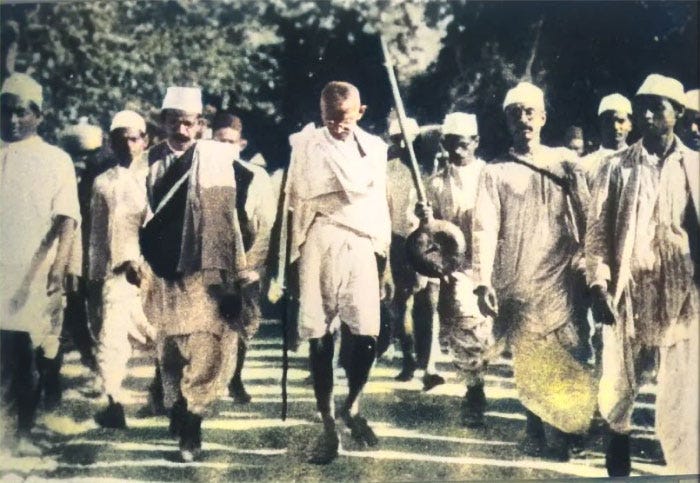
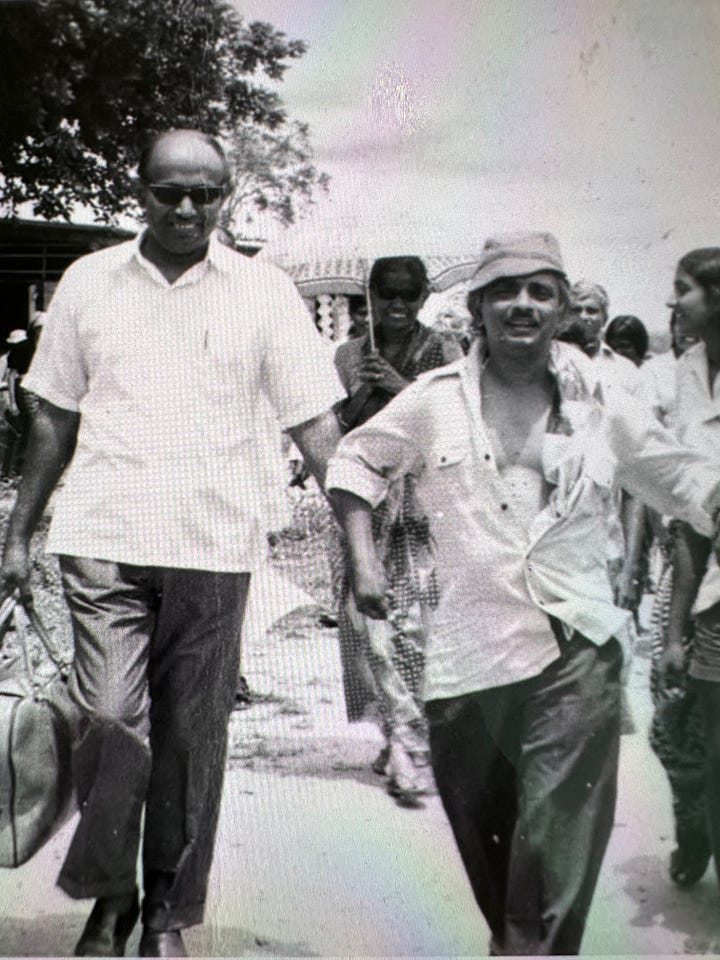
According to Sarvodaya USA, a support organization in the United States, describing the founding history of Sarvodaya Shramadana, Dr. Ari “decided to organize a two-week “Shramadana” (sharing of labor) in which the students would work alongside villagers on basic needs projects, and would join with them in meals, conversation, and cultural performances. The goal was not to provide charity but to inspire “the awakening of all through the sharing of labor.” Thus, the Sri Lankan Sarvodaya Shramadana movement was born.
Their example provided inspiration for thousands of other Shramadana camps throughout the country, and the movement grew to have programs and significant influence in over 15,000 villages. Sarvodaya workers helped villages organize for self-governance, carry out basic needs projects, and establish savings banks, credit programs, preschools, training centers, and many other facilities that would uplift and empower all. The movement is governed by the ideals of participatory democracy with decentralized power and resources.”
In other words, by working together and giving of themselves, the people in a poverty-stricken village could use the one resource they did have—labor—to uplift and transform the entire community.
To meet the real needs of the most impoverished Sri Lankans, Dr. Ari and the team conducted surveys in many villages, asking residents to list their ten most important needs in order of urgency and importance. Their needs were:
How simple is that?
Instead of acting like educated experts and imposing a top-down solution based on “we know what’s best for you,” how about being curious observers who empower people first to identify and then build their own community-based, community-owned networks
to fulfill their own needs?
The movement continued to evolve as villagers themselves identified hundreds of “sub-needs” within the ten common needs categories and built personal / family, cultural, social, economic, and political infrastructure to satisfy them.
By the time I discovered Sarvodaya, the movement had expanded to more than 15,000 villages in Sri Lanka, with the intention of creating a society free of poverty, excessive wealth, and the conflict that grows out of economic and social inequality.
My heart was lifted when I found out about Sarvodaya because it addressed a deep schism and a yearning within Western culture and my own psyche: how to re-join the spiritual part of our nature with the rational and practical — and put this together in real-world community building whose aim was system-wide transformation.
While many religious and spiritual leaders may focus on the individual cultivation of love and self-actualization or salvation, Dr. Ari blazed a new path to awakening the self AND the community simultaneously.
While social activists focus on external structures of domination and oppression and often put down religious or spiritual values as superstitious or irrelevant, Dr. Ari challenges us with a fundamental question:
Can we activate human beings' interior lives while transforming the social and economic structures of local and global civilization?
“A soul force lies dormant in all of us,” Dr. Ari wrote, and “No human life is worth living if this inner man and treasures are not discovered and experienced.”
He elaborated that Sarvodaya workers “try to awaken themselves spiritually and thus transcend sectarian religious differences, to become one with all … several million Sarvodaya adherents in Sri Lanka have proved that they can transcend racial, religious, linguistic, and ethnic barriers to accept a common state of ideals, principles, and constructive programs to build a new society as collectively envisioned by them.”
I thought, wow, I really needed to pay attention to this. This was the first model in the world — and still is — that not only was in alignment with my own vision but seemed rooted in a lineage reflecting the Ancient Blueprint from Jesus, Gandhi, and Dr. Martin Luther King, Jr.
This addresses the question from the Introduction: Are there universal virtues, principles, common needs, and methods of organizing networks that could bring whole communities together across the polarized divides? The answer was and still is YES.
This approach — spiritual and practical, religious and scientific, inner and outer — was exactly what I had been preparing for. And there it was, a successful, mature movement that at that time had a track record of more than thirty years.
As I researched more deeply, I found that Sarvodaya works within three spheres of life: consciousness, power, and economics. These pillars are interwoven into the fabric of their movement and have led to practical success in mobilizing millions to participate in their own development.
The sheer numbers are enough to make us take notice. In addition to mobilizing more than 15,000 villages, Sarvodaya has energized these communities to build more than 5,000 pre-schools, thousands of village banks, and more than one hundred thousand small businesses, community health centers, libraries, and cottage industries; dig thousands of wells and latrines; promote biodiversity, solar energy, large agroforestry, regenerative, and ecovillage initiatives … and in the process, build Beloved Community.
The family gathering, or Shramadana (which, as mentioned previously, translates as sharing the gift of energy, labor, and resources), is a central group process that serves as an activating hub for everything Sarvodaya does. At a Shramadana, all the families in a village gather to discuss the ten basic needs and then agree to focus on one deep-felt need that seems to be on everyone’s mind.
Once they reach an agreement, they organize another family gathering. That gathering is part spiritual revival, potluck dinner, strategy session, and community-building effort—not unlike the Convivencias we instinctively convened in the Sherman Heights neighborhood. The meetings begin with meditation and prayer to inculcate and embody the virtues of loving kindness and being of service to all.
Then comes the common work project that emerged from the one-felt need discussed in the larger group. After that, the people return for shared food, reminiscent of the traditional “barn raisings” in rural America.
Although Sarvodaya is rooted in Buddhism, Gandhian thought, and Sri Lankan culture, the principles on which it is based are universally applicable.
The primary idea is that consciousness, personality transformation, and practicing virtues are integral ingredients in any effort to change society. Charity, self-sufficiency, and self-governance begin at home.
The bottom line turns out to be the Transcendent Ground of Being “downloaded” into our personality, taking the form of the common, universal virtues that make life worth living—in each individual and the whole community.
Sarvodaya actively works to cultivate these inner qualities that enable people to cooperate to improve their condition and unify their community through universal, shared virtues. Albeit through a Buddhist lens —love/loving-kindness (metta), compassion (karuna), equanimity (upekkha), and sympathetic/empathic joy for oneself and others (mudita) — these are their main drivers of social change and realizing their community’s ten basic human needs.
Projects are initiated and focused on building trusted community relationships, networks of support and mutual needs, and the sharing of resources to benefit the entire community.
I am often reminded how the “spiritual” imperative is missed in the West. Secular social activists, community developers, and many network weavers often dismiss spiritual virtues as divisive because of the differences among religious belief systems. Spirituality, long considered an individual pursuit, may be considered irrelevant or not up to the challenge of transforming social and economic structures.
Most importantly, spirituality, with its idea that there is a Transcendent Ground of Being, has been dismissed within the culture of separation as either superstition or ignorance — something that should have been discarded after the Enlightenment.
Basically, the Culture of Separation says there IS no Ground of Being. So, spirituality has been pushed out of the public square, and all that is left is a materialist consumer “religion” to replace it.
That’s why I was so excited to discover Dr. Ari’s work actively demonstrating what I have called an Ancient Blueprint and bringing it to life. Sarvodaya turns the fears, dismissals, and outright antagonism of modern culture toward religion and spirituality right side up!
Dr. Ari has lit a path and shown how it is possible to release the raw power and energy of a person’s interior and spiritual life to not only unite a community but as a practical tool to bring the total community together to address social and economic inequality.
Sarvodaya aims to address the core, common basic human needs and challenges of village communities by systematically developing social and economic frameworks that support
self-sufficiency and systemic change.
We in the West should notice the simplicity of finding common projects that can bring everyone in a community together. With the polarization of American and other countries’ political and economic life, we find ourselves in warring, separatist tribal camps. The disrespect and lack of civility in political discourse are a symptom of not addressing more fundamental needs.
Individual Sri Lankans, at the village level, have been able to bring the Transcendent Ground of Being into the world — bringing “heaven” to earth, even under hellish conditions that many neglected poor had experienced as “normal."
The Transcendent, “vertical” spiritual connection is translated into an immanent, horizontal “people’s power” through community participation, promoting unity amongst a diverse population, self-reliance, and finding common projects to work on.
These are the hallmarks of Sarvodaya, the foundational principles we can learn from, and what I learned about how to apply them in the Western world.
Over a 65-year time frame, more than five thousand of those villages and towns have evolved to form what they call Sarvodaya Societies.
A Sarvodaya Society is the foundation for each community’s new “ecosystem network” scaffolding of parallel culture, society, economy, and governance—a peaceable, transformative “counterculture” operating alongside the “official” local government. These are independent yet interdependent movements.
Creating an independent community movement as a parallel system offers a tangible method to bring together individuals across the various divides and silos created by centralized, top-down economic and political power structures, which intentionally maintain division among us.
What makes these Sarvodaya societies unique compared to other models of community and economic development is the inculcation of traditional yet universal spiritual virtues and principles into a new culture whose conscious intention is to activate a new nonviolent, cooperative society and local economy — through this national-level network of 5,000 villages and towns.
I want to take a moment to truly appreciate the significance of what Dr. Ari has accomplished. He was inspired by and then made real the idea that Mahatma Gandhi introduced into India in the early 20th century, what Gandhi called a Commonwealth of Village Republics.
Sarvodaya’s multiscalar and fractal empowerment network commonwealth is not a
pie-in-the-sky ideal but a living reality — that we can learn from.
This means that we don’t have to reinvent the wheel!
There are many positive efforts today (like Bioregionalism, Cosmo-Localism, Relocalization, Doughnut Economics, and others) that seem to be unaware of spiritually based movements like Sarvodaya or perhaps dismiss them as irrelevant.
Rediscovering these movements and building on them will accelerate the adoption of these new structures and systems because they will rest on top of a universal foundation of “Cosmic Love” that transcends all “captured narratives”—such as the worn-out “left-wing/right-wing” dichotomy, identity politics narratives, and other supposed culture war distractions—that characterize the culture of separation.
If I haven’t made it clear by now, let me reiterate: EVERY PROBLEM we seek to address separately—even if it appears to be a universal challenge or crisis, like war, poverty, climate change, dying species, or a pandemic—can only be solved by creating a culture of connection that lifts us OFF THE BATTLEFIELD so we can work TOGETHER in a new CONTEXT.
To reiterate a point made earlier, Sarvodaya was a pioneer – who stood on the shoulders of giants. Consider that Mahatma Gandhi's idea and implementation of the Commonwealth of Village Republics strategy was born almost one hundred years ago. The Sarvodaya Shramadana in Sri Lanka has brought that vision to life through its network of 5,000 communities over the last sixty-five years.
Interestingly, the idea also resonated with U.S. President Thomas Jefferson, who offered his own parallel solution nearly 250 years ago -- a Commonwealth of Ward Republics, where local autonomy and “circles of trust” could weave into the fabric for a truly new nation from the ground up.
Historically, these ideas go back even further, two thousand years, to Jesus in the Sermon on the Mount, which describes what I call an Ancient Blueprint—a pattern for us to follow in building community – and, as we will discover later, provided a template for early Christian communities.
And yet…
In my conversations with people, leaders, and changemakers around the world, there seems to be a lack of awareness that such an Ancient Blueprint even exists, let alone recognition of it as a pattern for building local, parallel society movements.
Once again, we don't have to reinvent anything—it is already right in front of us, with a long tradition. Let's learn from what's already working!
Here are the basic ingredients of Sarvodaya’s Cultural Change Strategy:
A Five-Stage Development Process for building a parallel culture, society, economics, and politics (see video below)
Local grassroots empowerment versus top-down approaches, even those that are well-intentioned
“Sweet Spot” is the whole local village community rather than at the scale of a smaller eco-village or a larger, whole bioregional scale. I call this a “micro” bioregional anchor.
Spiritual foundation through lived Shared Virtues in action to satisfy ten basic human needs — starting with spiritual development turns Maslow’s Hierarchy of Needs upside down!
10 Basic Human Needs to focus organizing energy on what people and communities have in common rather than what divides us
Multi-Scalar and Fractal Awakening in expanding circles of trust, starting with an individual human being: From Personal, Family, Village, Country, World (We will develop this idea further in Part III of this book.)
Novel “Mycelial” Networks are built by consciously channeling a critical mass of positive consciousness and then weaving new local social, cultural, ecological, economic, and political infrastructure networks, seeing the community as a whole living system.
Could this be an answer to the separate silo question and, at the same time, a pathway to a Culture of Connection?
The rest of my book addresses that question. I will continue to draw, especially from Sarovodaya Shramadana, the principles, and methodologies I have successfully applied to Western urban settings over the past thirty-five years.
Learning about Sarvodaya’s success, a Buddhist movement, actually helped me understand Jesus’ teaching about putting “new wine in old wineskins” in a new light. Jesus, as a “rebellious” Jew, saw how the mainstream religion of his day basically didn’t think they had a choice but to form alliances with the brutal Roman Empire.
He said you couldn’t put the new wine of the Kingdom of Heaven — bringing heaven to Earth — through the old wineskin of their materialist version of the Culture of Separation at that time.
Instead, we need to put New Wine (Bring the Transcendent) into our real lives and the new community frameworks (New Wineskin Networks) of a loving community.
What I am about to say could be seen as a shocking statement. Dr. Ari and Sarvodaya have achieved what has not been accomplished nationally by any religious, cultural, economic, or political movement in the last 1,800 years of history!
Sarvodaya’s seamless integration of spirituality and the group’s ability to build bioregional ecosystem networks — creating a new society amid the old — captured my full attention.
Even today, as we face multiple global crises, no other movement offers humanity such a clear path forward. Through their national network of 15,000 villages and towns, with more than 5,000 of which have developed “Sarvodaya Societies,” they have built a parallel organizational network scaffolding for a new society alongside the official local and national governments.
While there are obvious substantive differences between the Sri Lankan and Western contexts, I’ve worked to translate their principles into what I call Symbiotic Networks. This book will provide you with a step-by-step approach to starting your own local community weaving movement — anywhere in the world.
You might check out this 7-minute video that goes into more detail about Sarvodaya’s 5-stage community development methodology.
NEXT POST is Chapter 4, Part 2: Jesus Sends Me a Buddhist -
Embodying Virtues – the Interface Between Heaven and Earth and
Launching the First Symbiotic Network
Stay Tuned to find out about my first real experiment in building Symbiotic Networks.
PREVIOUS POST
TABLE OF CONTENTS
NEXT POST





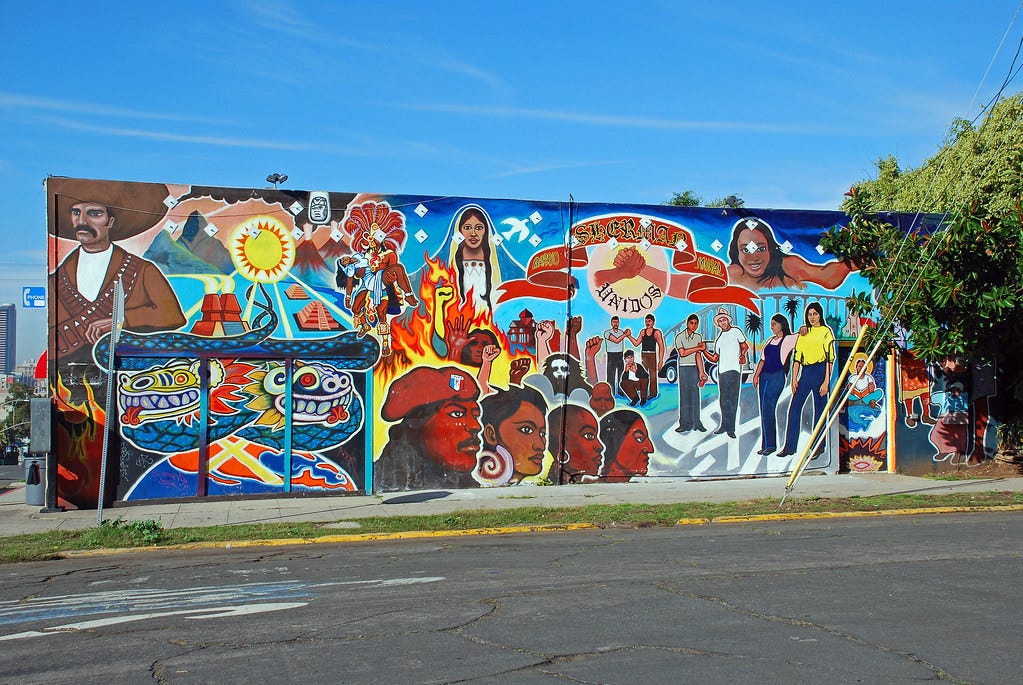


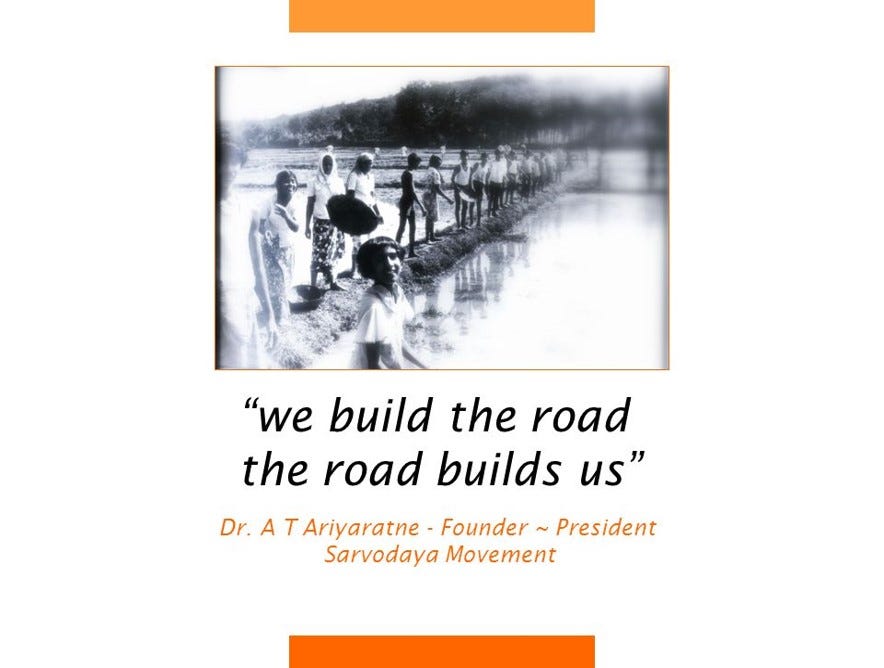
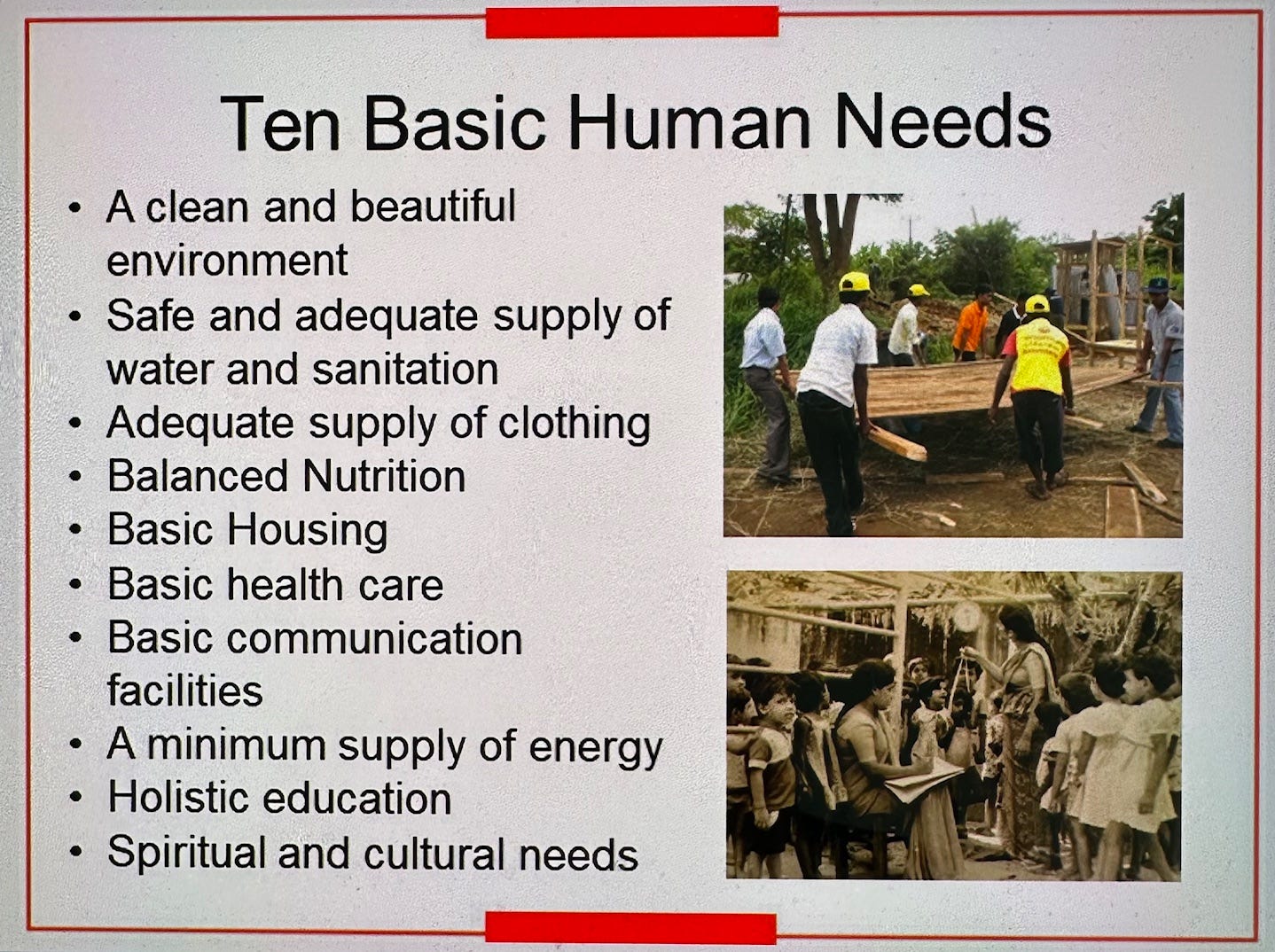
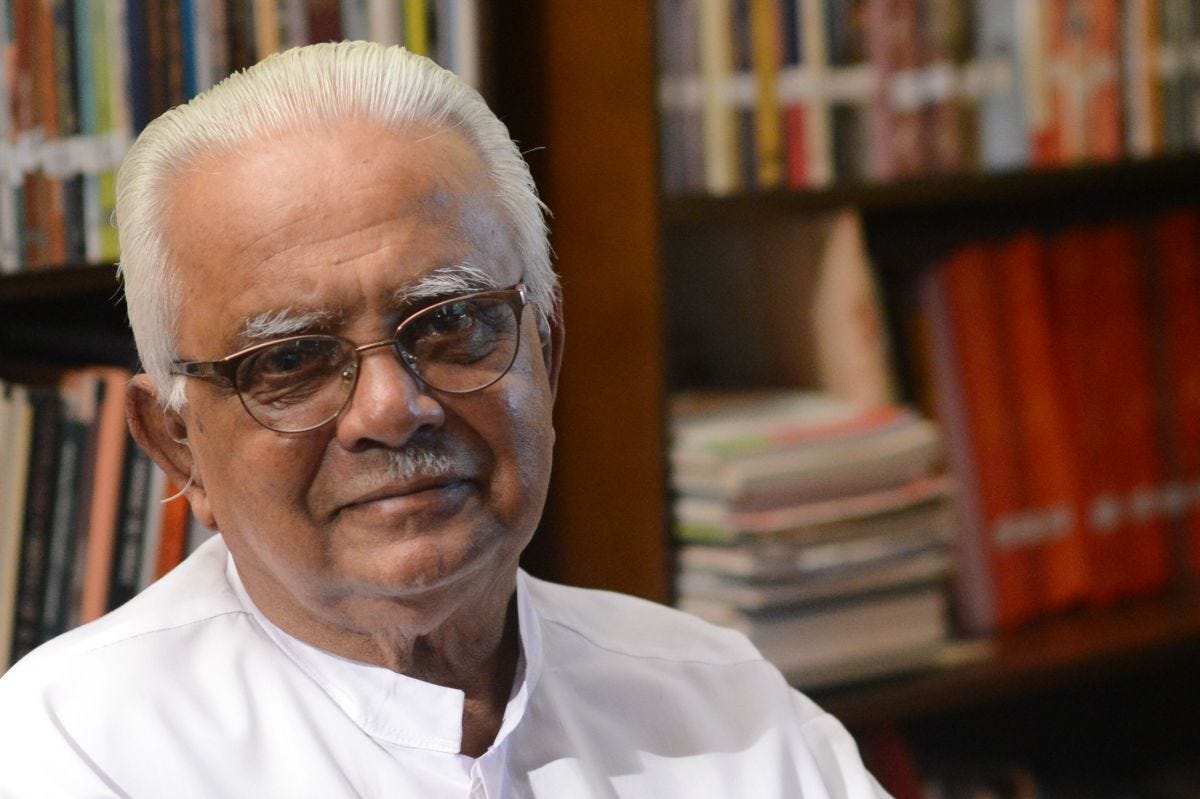
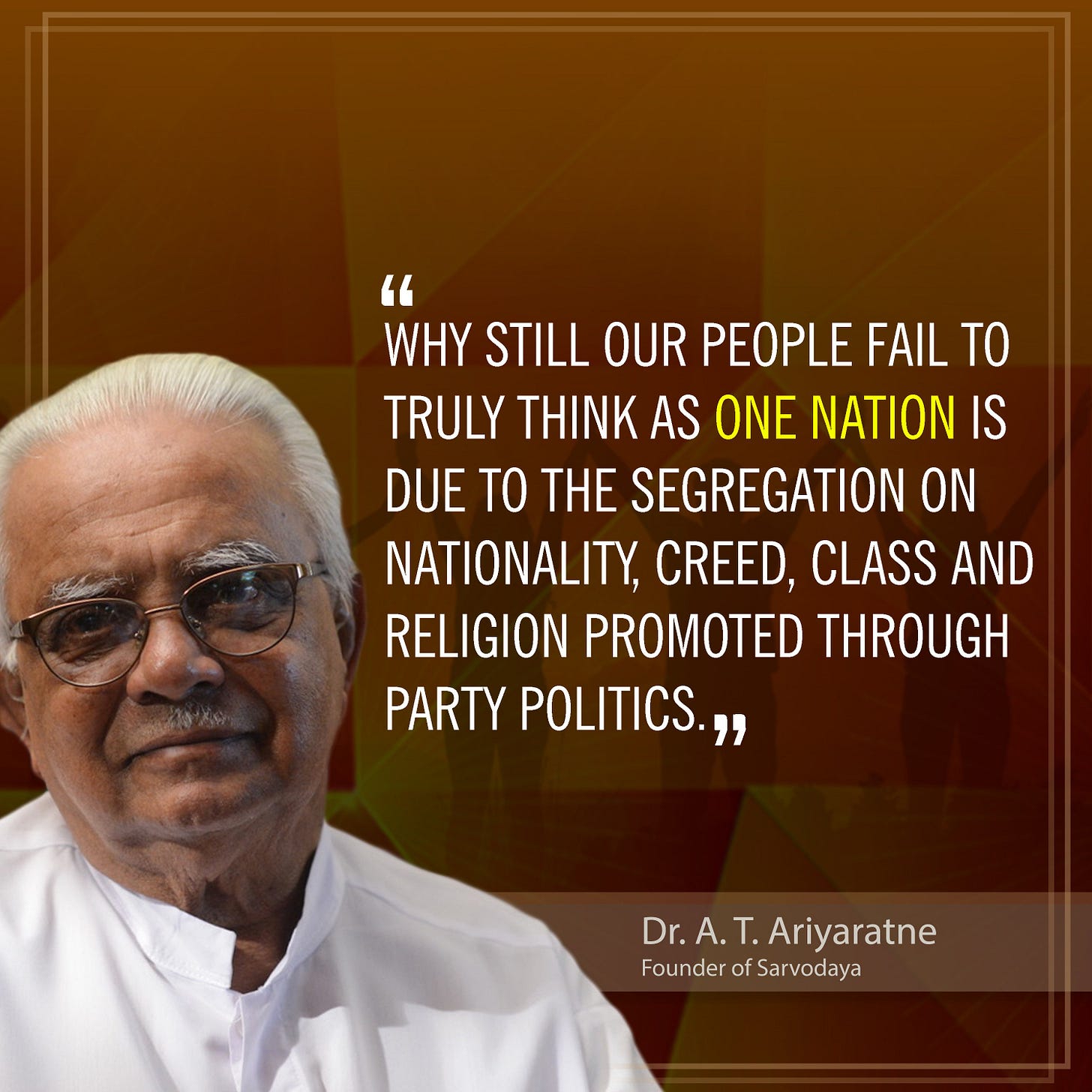
I watched the video - the exact figures are interesting to see - it would be good to put them in a footnote or appendix. THEY are still impressive enough.
"starting with spiritual development turns Maslow’s Hierarchy of Needs upside down!" personally I don't like this. Maslow had 2 pyramids, he stole the ideas from the Blackfoot tribe, reversed the order and some other things. I think the Blackfoot should be given more credit for what they did - at least somewhere in the book.